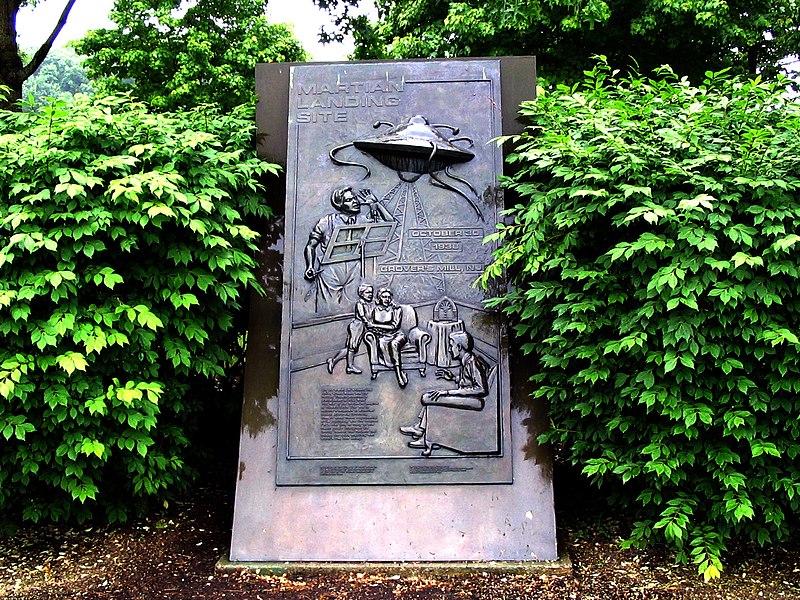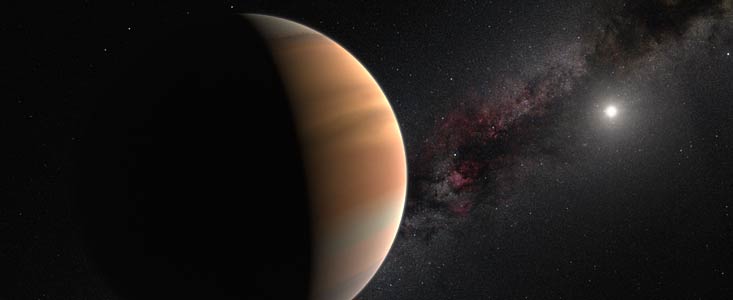 A green and red Orionid meteor.
(Image Sources: Wikipedia. org:"Orionid meteor" by Brocken Inaglory. Licensed under CC BY-SA 3.0 via Commons - https://commons.wikimedia.org/wiki/File:Orionid_meteor.jpg#/media/File:Orionid_meteor.jpg)
A green and red Orionid meteor.
(Image Sources: Wikipedia. org:"Orionid meteor" by Brocken Inaglory. Licensed under CC BY-SA 3.0 via Commons - https://commons.wikimedia.org/wiki/File:Orionid_meteor.jpg#/media/File:Orionid_meteor.jpg)
By Glenn A. Walsh
Reporting for SpaceWatchtower
The annual Orionid Meteor Shower peaks
Wednesday night / Thursday morning. The peak actually occurs on
Wednesday Evening, 2015 October 21 at 7:00 p.m. Eastern Daylight
Saving Time (EDT) / 23:00 Coordinated Universal Time (UTC), although the
best time to view the meteor shower is after local Midnight.
An Internet web-cast of this meteor
shower will be available for areas with cloudy or inclement weather.
An Internet link to this web-cast is at the end of this blog post.
The Orionids can often be seen a day or
two on either side of the peak date, and sometimes Orionids can be
seen for a week, around the time of the peak. The Orionid Meteor
Shower is the most prolific meteor shower associated with Halley's
Comet. Although not always, in some years the rate of meteors seen at
the peak time can average between 50 and 70 meteors per hour. However, it is more likely that you could expect to see about a dozen meteors per hour, around the peak time of the Orionid Meteor Shower.
A meteor shower normally consists of
dust particles related to a comet. Each time a comet approaches the
Sun, the comet loses dust particles following the melting or
sublimating of ice on the comet. These dust particles, called
meteoroids, continue to follow the same orbit as the comet and form a
meteoroid stream. Each year, as the Earth orbits the Sun, the Earth
passes through several of these meteoroid streams, becoming Earth's
meteor showers.
The Earth's gravity then attracts many of
these meteoroids to fall to Earth, and they are viewed by people as
meteors, as they burn-up in the atmosphere. Most are extremely small
and burn-up completely. From time-to-time, larger particles enter the
atmosphere and create brilliant displays known as fireballs or
bolides. If these particles are large enough, they may not completely
burn-up and land on Earth as a meteorite.
The parent comet of this particular
meteor shower is the famous Halley's Comet, one of the oldest known
comets (the earliest recorded sighting of Halley's Comet was in 240
B.C.). Comet Halley is also the parent comet to the Eta Aquarid
Meteor Shower in early May.
Halley's Comet passed the Earth twice
in the twentieth century: 1910 and 1985-1986. When the comet came
close to Earth in 1910, famous astronomer and telescopes-maker John
Brashear hosted public observing sessions of the comet at the
nearly-completed, newer and larger Allegheny Observatory in
Pittsburgh.
In 1985 and 1986, when the comet was
not as close as in 1910, Pittsburgh's original Buhl Planetarium and
Institute of Popular Science (a.k.a. Buhl Science Center) held public
observing sessions for Halley's Comet, utilizing Buhl's rather unique
10-inch Siderostat-type Refractor Telescope. The next time Halley's
Comet passes the Earth, which will be closer than the 1985-1986
apparition, will be in 2061.
Meteor showers are not normally named
after the parent comet. And, in this case, that would be confusing
since Halley's Comet has spawned two major meteor showers.
These meteors are known as Orionids, as
they appear to emanate from the Constellation Orion the
Hunter—specifically the club held by Orion. Hence, Orion is known
as the radiant point of this meteor shower. However, you should not,
necessarily, be looking only at Orion, when looking for meteors in
this shower. Meteors can appear in any part of the sky at any time
(although a meteor's trail may tend to point back toward the
radiant).
The Orionid Meteor Shower was first
noticed in 1839. E.C. Herrick made this observation, as well as one
the next year in 1840. A.S. Herschel made the first documented
record, accurately forecasting this meteor shower.
To more easily see these meteors it is
better to be away from city lights, as artificial lighting can
drown-out the dimmer meteors. The best time to see any meteor shower
is between local Midnight and morning twilight, when the Earth is
actually rotating-into the meteor shower.
Binoculars and
telescopes are not very useful for finding meteors. Meteors streak
across the sky in a very short period of time, far too short to aim
binoculars or a telescope. So, the best way to view a meteor shower
is to lie on a blanket or beach towel on the ground, or use a
reclining chair, in an area with a good view of the entire sky (with
few obstructions such as buildings, trees, or hills), and keep
scanning the entire sky.
The day before this meteor shower, the
Moon reaches the First Quarter Phase: 2015 October 20 at 4:31 p.m.
EDT / 20:31 UTC. Hence, a roughly half-lit lunar sphere will be setting a
couple hours after local Midnight on October 21 and 22. This is good
because bright moonlight should not interfere much with viewing the
dimmer meteors in the early morning hours, when it is best to view
this meteor shower.
So, if you go out to see the Orionid
Meteor Shower, start looking for meteors around local Midnight, or
perhaps a little later. Make sure you have a good site where you can
see most of the sky, and that sky is relatively clear. Be sure to
dress properly for the Autumn, early morning temperatures.
And, you want to go out ahead of time,
before you actually start looking for meteors, to get your eyes
accustomed to the dark sky. Dark-adapting your eyes for meteor-watching could take up to a half-hour.
Of course, meteor showers. like all
celestial observations, are weather-permitting. If the weather in
your area does not permit direct viewing outdoors of this meteor
shower, it can be viewed during a special web-cast on the Internet.
A cautionary note for those who find it
necessary to watch the Orionid Meteor Shower on the Internet. The
video camera, used for each web-cast, can only aim at one part of the
sky at a time. Hence, do not expect to see as many meteors as you
might see with your own eyes outside. Outdoors, you can easily scan
the entire sky for meteors, while a camera aimed at one area of the
sky will only be able to see the meteors that enter that particular
part of the sky
Internet Site for
Viewing Orionid Meteor Shower Near Peak ---
Slooh Community
Observatory – Wednesday Evening, 2015 October 21 beginning at 8:00
p.m. EDT / October 22 at 0:00 UTC (observations from telescope in the
Canary Islands of Spain):
More
on the Orionids Meteor Shower ---
Source: Glenn A. Walsh Reporting for SpaceWatchtower, a project of Friends of the Zeiss.
Want to receive
SpaceWatchtower blog posts in your inbox ?
Send request to <
spacewatchtower@planetarium.cc >..
gaw
Glenn A. Walsh, Project Director,
Friends of the Zeiss <
http://buhlplanetarium.tripod.com/fotz/ >
Electronic Mail - <
gawalsh@planetarium.cc >
SpaceWatchtower Blog: <
http://spacewatchtower.blogspot.com/ >
Also see: South Hills Backyard Astronomers Blog: <
http://shbastronomers.blogspot.com/ >
Barnestormin: Writing, Essays, Pgh. News, & More: <
http://www.barnestormin.blogspot.com/ >
About the SpaceWatchtower Editor / Author: <
http://buhlplanetarium2.tripod.com/weblog/spacewatchtower/gaw/ >
SPACE & SCIENCE NEWS, ASTRONOMICAL CALENDAR:
<
http://buhlplanetarium.tripod.com/#news >
Twitter: <
https://twitter.com/spacewatchtower >
Facebook: <
http://www.facebook.com/pages/SpaceWatchtower/238017839577841?sk=wall >
Author of History Web Sites on the Internet --
* Buhl Planetarium, Pittsburgh:
<
http://www.planetarium.cc >
* Adler Planetarium, Chicago:
<
http://adlerplanetarium.tripod.com >
* Astronomer, Educator, Optician John A. Brashear:
<
http://johnbrashear.tripod.com >
* Andrew Carnegie & Carnegie Libraries:
<
http://www.andrewcarnegie.cc >
* Civil War Museum of Andrew Carnegie Free Library:
<
http://garespypost.tripod.com >
*
Duquesne Incline cable-car railway, Pittsburgh:
<
http://inclinedplane.tripod.com >
* Public Transit:
<
http://andrewcarnegie2.tripod.com/transit >







